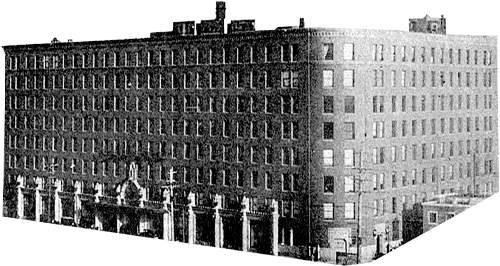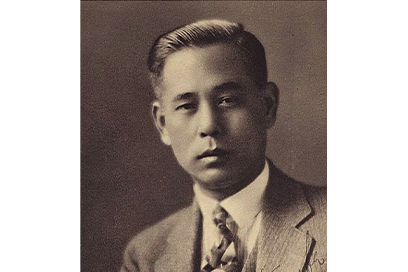 01
1925
01
1925
Osaka
The Daibiru-Honkan Building
Pioneering Efforts Toward a Full-Fledged Office Building Rental Business
Setsu Watanabe, a Pioneer in Japanese Architecture
No discussion of the history of Daibiru’s building construction business would be complete without mentioning Setsu Watanabe, a pioneer in Japanese architecture and designer of the Daibiru-Honkan Building. Watanabe had sole responsibility for the architectural design of our buildings during Daibiru’s early years. At that time, he ran Watanabe Architects & Associates.
After working for the Railway Office (later the Ministry of Railways and then the Ministry of Transport, and now the Railway Bureau, MLIT), Watanabe established his own architectural design firm in Osaka in 1916. He was involved in a series of architectural design for large properties, and he was also enthusiastic about absorbing foreign techniques and knowledge. In 1920 and 1922, he went on two architectural tours of Europe and the United States that left the following painful impression: “The history and present state of construction in Japan are extremely primitive, and even in the metropolises of Tokyo and Osaka, there are very few rental offices that are worthy of notice.” Watanabe later went on to work on some of Japan’s most iconic buildings at the time, including the former Kyoto Station, the former Industrial Bank of Japan Head Office, the O.S.K. Lines Kobe Branch Building, and the Daibiru-Honkan Building. These projects solidified his reputation as an architect.
Watanabe is said to have been interested not only in architectural design but also in building equipment. The O.S.K. Lines Kobe Branch Building was the first building designed by a Japanese architect that used forced hot water heating, and the former Industrial Bank of Japan Head Office had Japan’s first air conditioning system in an office building.
It was only natural that Watanabe would recognize the necessity of making buildings in Japan, one of the world’s most earthquake-prone countries, highly earthquake-resistant.
-
1927 1931 Hibiya Daibiru Buildings
No. 1 and No. 2 -
2007 International Operations
-
- An Unexpected Discovery of a Good Property
- Mutual Trust and a Long-Term Perspective as Points of Agreement
- The Acquisition of a Property in Hanoi Through Unity of Philosophy
- Implementing Daibiru Quality Through Building Renovations
- Challenges in Australia, Our Second Overseas Expansion Target
- The Discovery of 275 George Street
- Difficult Contract Negotiations with JHG
- Overcoming Several Unexpected Difficulties
-



